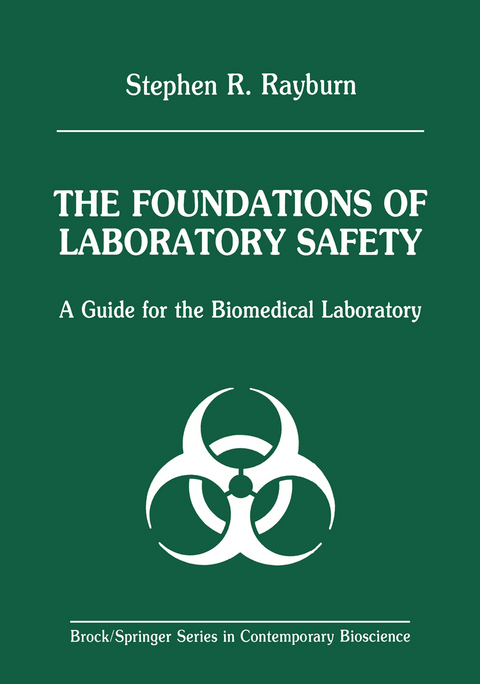
The Foundations of Laboratory Safety
Springer-Verlag New York Inc.
978-1-4612-7965-5 (ISBN)
1 Basic Principles of Laboratory Safety.- 1 Safe Laboratory Techniques.- 2 Protective Clothing and Personal Equipment.- 3 Safe Personal Habits and Practices.- 4 Housekeeping Procedures.- 5 Principles of Decontamination and Sterilization.- 2 Laboratory Facilities, Operations, and Practices 67.- 6 Specialized Equipment Facilities.- 7 Waste Disposal in the Research Laboratory.- 8 Glassware Washing Operations.- 9 Design and Use of Biological Safety Cabinets.- 10 Facility Design and Physical Containment.- 3 Biomedical Laboratory Safety.- 11 Hazards of Biological Agents.- 12 Chemical Hazards.- 13 Hazards of Radioisotopes.- 4 Control of Common Hazards.- 14 Physical and Mechanical Hazards.- 15 Electrical Hazards.- 16. Fire Hazards.- 17. Handling Compressed Gases.- 5 The Components of the Effective Safety Program.- 18. Safety Regulations and Standards.- 19. Personnel Orientation and Training.- 20. Role of Medical and Health Factors.- 21. Accident Reduction and Emergency Planning.- 22. Designing a Safety Program.- Appendix 1: Cleaning Up Spills of Hazardous Agents.- Appendix 2: Hazard Characteristics of Common Toxic Chemicals.- Appendix 3: Hazard Warning Signs and Labels.- Appendix 4: Packaging and Shipping Hazardous Materials.- Appendix 5: Resources for Help and Information.- Appendix 6: Syllabus for a Safety Course.- References.- Additional Readings.
| Reihe/Serie | Brock Springer Series in Contemporary Bioscience |
|---|---|
| Zusatzinfo | XIII, 418 p. |
| Verlagsort | New York, NY |
| Sprache | englisch |
| Maße | 178 x 254 mm |
| Themenwelt | Naturwissenschaften ► Biologie ► Biochemie |
| Naturwissenschaften ► Biologie ► Genetik / Molekularbiologie | |
| Naturwissenschaften ► Biologie ► Zellbiologie | |
| ISBN-10 | 1-4612-7965-8 / 1461279658 |
| ISBN-13 | 978-1-4612-7965-5 / 9781461279655 |
| Zustand | Neuware |
| Haben Sie eine Frage zum Produkt? |
aus dem Bereich


